Copywriting is all about connecting with your audience, and one of the most powerful ways to do that is by tapping into their emotions. Emotions have the power to move us, to capture our attention, and to influence our behavior. When used effectively, emotional appeals can make all the difference in a marketing campaign. In this article, we’ll explore some more examples of successful copywriting campaigns that use emotional appeals to drive action.
- Apple’s “Think Different” Campaign
- Coca-Cola’s “Taste the Feeling” Campaign
- Mastercard’s “Priceless” Campaign
- Airbnb’s “We Accept” Campaign
- Google’s “Year in Search” Campaign
- Coca-Cola’s “Share A Coke” Campaign
- Apple’s “Get a Mac” Campaign
- Pepsi’s “The Joy of Pepsi” Campaign
- FedEx’s “Absolutely, Positively Overnight” Campaign
- IBM’s “Think” Campaign
- Starbucks’ “The Third Place” Campaign
- Toyota’s “Let’s Go Places” Campaign
- Mercedes-Benz’s “The Best or Nothing” Campaign
Apple’s “Think Different” Campaign

Do you ever feel like you don’t fit in with the crowd? In 1997, Apple launched its “Think Different” campaign, which celebrated the rebels and the nonconformists who dared to think differently. The campaign featured a series of emotional ads that showcased the likes of Albert Einstein, Martin Luther King Jr., and Mahatma Gandhi, along with the tagline “Think Different.” The emotional appeal of the campaign was its message of empowerment and the idea that being different is something to be celebrated.
Coca-Cola’s “Taste the Feeling” Campaign

Do you ever feel like you just need a little pick-me-up? Coca-Cola’s “Taste the Feeling” campaign aimed to capture the emotional appeal of its product by showcasing people enjoying a refreshing Coca-Cola in different situations. The campaign featured a series of emotional ads that showed people experiencing moments of joy, love, and connection, along with the tagline “Taste the Feeling.” The emotional appeal of the campaign was its message of happiness and the idea that Coca-Cola can bring people together.
Mastercard’s “Priceless” Campaign

Do you ever feel like the best things in life are priceless? Mastercard’s “Priceless” campaign tapped into the universal emotion of gratitude by showcasing the things in life that money can’t buy. The campaign featured a series of emotional ads that showed people experiencing moments of joy, love, and connection, along with the tagline “There are some things money can’t buy. For everything else, there’s Mastercard.”
Airbnb’s “We Accept” Campaign
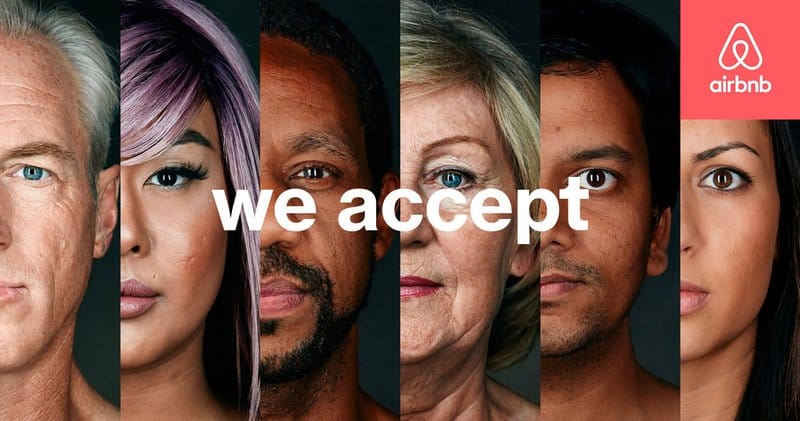
Do you ever feel like you don’t belong? Airbnb’s “We Accept” campaign aimed to promote inclusivity and diversity by celebrating people from all walks of life. The campaign featured a powerful ad that showcased a diverse cast of people, including same-sex couples, families with children, and people of different races and religions. The emotional appeal of the campaign was its message of acceptance, belonging, and unity.
Google’s “Year in Search” Campaign
Do you ever feel like you’re not alone in your struggles? Google’s “Year in Search” campaign aimed to showcase the most popular searches of the year and to reflect on the events and issues that have shaped our world. The campaign featured a powerful ad that showed people from all over the world searching for answers to life’s biggest questions, including how to be happy, how to be successful, and how to make a difference. The emotional appeal of the campaign was its message of empathy, curiosity, and connection.
Coca-Cola’s “Share A Coke” Campaign
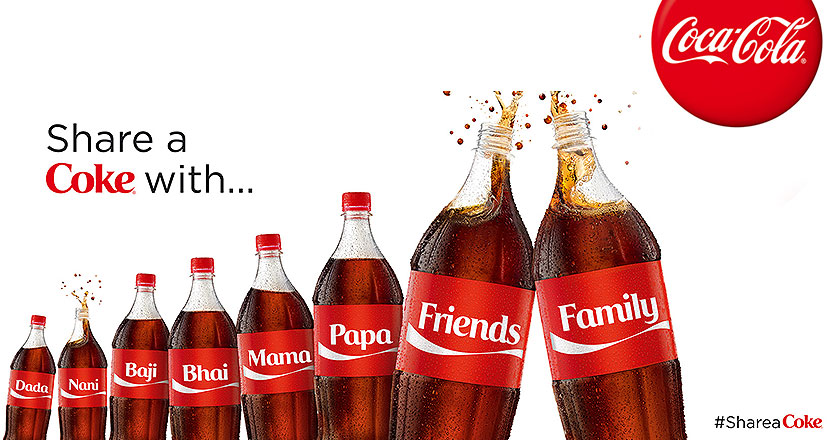
Do you ever feel like sharing a moment with someone special? Coca-Cola’s “Share A Coke” campaign aimed to create an emotional connection with its audience by personalizing its bottles with people’s names. The campaign featured a powerful ad that showcased people from all walks of life sharing a Coke and connecting with each other. The emotional appeal of the campaign was its message of friendship, love, and connection.
Apple’s “Get a Mac”
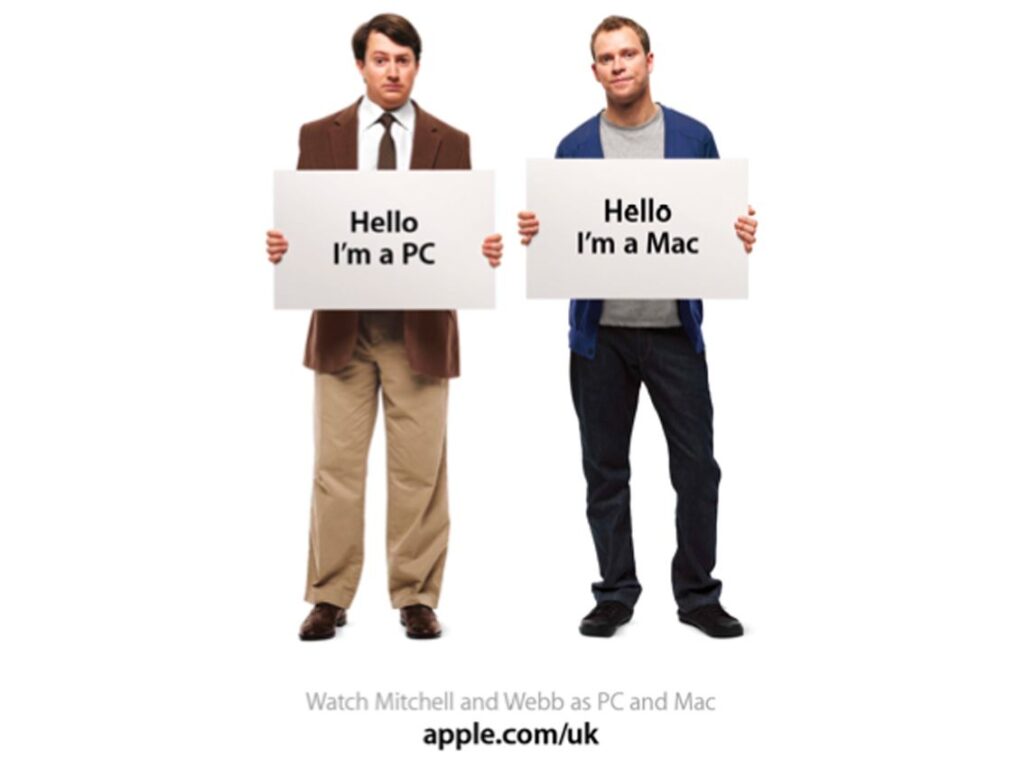
The “Get a Mac” campaign by Apple, launched in 2006, featured commercials that humorously compared a young, cool Mac to a stuffy, nerdy PC. The campaign was a huge success, with Apple’s market share growing significantly. The ads were simple yet effective, highlighting specific features and benefits of owning a Mac. The campaign’s consistency and ability to stay on message reinforced the idea that owning a Mac was the cool, smart choice, making it a great example of the power of effective copywriting.
Pepsi’s “The Joy of Pepsi” Campaign

Pepsi’s “The Joy of Pepsi” campaign in 1999 was a highly successful copywriting campaign that used popular music stars like Britney Spears and Beyonce to associate positive emotions like joy and happiness with the Pepsi brand. The campaign’s fun, upbeat ads and catchy jingles helped create a strong emotional connection with consumers and cement Pepsi’s position as one of the most popular soft drinks in the world. The campaign also demonstrated the power of celebrity endorsements to reach a younger, trendier audience and associate the brand with pop culture.
FedEx’s “Absolutely, Positively Overnight” Campaign
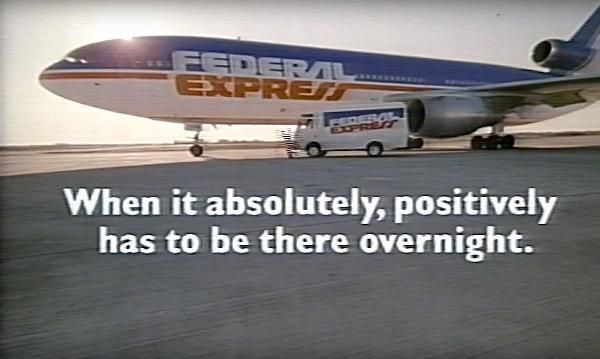
FedEx’s “Absolutely, Positively Overnight” campaign was a highly successful copywriting campaign that launched in 1982. The campaign emphasized the speed and reliability of FedEx’s overnight delivery service, highlighting the fact that customers could send packages “absolutely, positively” overnight.
The campaign was highly effective in conveying the benefits of FedEx’s service, with the ads featuring fast-paced visuals and catchy jingles that reinforced the idea that FedEx was the fastest and most reliable overnight delivery service.
One of the key elements of the campaign’s success was its ability to differentiate FedEx from its competitors. By emphasizing its speed and reliability, FedEx was able to create a clear and compelling value proposition that set it apart from other delivery services.
The campaign also demonstrated the power of repetition and consistency in copywriting. The phrase “absolutely, positively” became synonymous with FedEx’s brand, and the company used it consistently across all of its marketing materials, reinforcing the message and helping to build brand recognition and loyalty.
Overall, FedEx’s “Absolutely, Positively Overnight” campaign was a highly effective example of copywriting that successfully conveyed the benefits of a product or service and differentiated it from its competitors. By focusing on the speed and reliability of its overnight delivery service, FedEx was able to build a strong brand identity and drive sales for years to come.
IBM’s “Think” Campaign

IBM’s “Think” campaign is a highly successful copywriting campaign that has been in use for over 100 years. The campaign was first launched in 1911 and has since been updated to reflect changes in technology and the market.
The campaign’s central message is simple but powerful: to encourage people to think about the possibilities of technology and the ways in which it can be used to solve problems and drive innovation.
The campaign has been highly effective in communicating IBM’s brand values and identity, emphasizing the company’s commitment to innovation and its role in driving technological progress.
One of the key elements of the campaign’s success has been its versatility. The “Think” message has been used across a wide range of marketing materials, from ads and billboards to merchandise and social media.
The campaign has also been highly effective in reinforcing IBM’s brand identity and building brand recognition. The distinctive “Think” logo, with its bold font and simple design, has become instantly recognizable around the world.
Overall, IBM’s “Think” campaign is a testament to the power of simple, memorable copywriting. By focusing on a single message and reinforcing it consistently across all marketing materials, IBM has been able to build a strong brand identity and communicate its values and vision to customers and stakeholders alike.
Starbucks’ “The Third Place” Campaign
Starbucks’ “The Third Place” campaign is a highly successful copywriting campaign that launched in the late 1990s. The campaign focused on positioning Starbucks as a “third place” – a social destination that was distinct from home and work.

The campaign emphasized the idea that Starbucks was a welcoming and comfortable space where people could relax, socialize, and connect with others. The campaign’s messaging emphasized the idea of community and emphasized the importance of creating a sense of belonging and connection.
One of the key elements of the campaign’s success was its ability to tap into a deep and universal human need for connection and community. By positioning Starbucks as a social hub, the company was able to create a strong emotional connection with customers and build brand loyalty.
The campaign was also highly effective in conveying the benefits of the Starbucks experience. The ads featured images of cozy seating areas, friendly baristas, and delicious drinks and snacks, creating a compelling and aspirational vision of the Starbucks experience.
Overall, Starbucks’ “The Third Place” campaign is a testament to the power of emotional copywriting. By tapping into universal human needs and desires and creating a strong emotional connection with customers, Starbucks was able to build a highly successful brand and create a loyal following that continues to this day.
Toyota’s “Let’s Go Places” Campaign
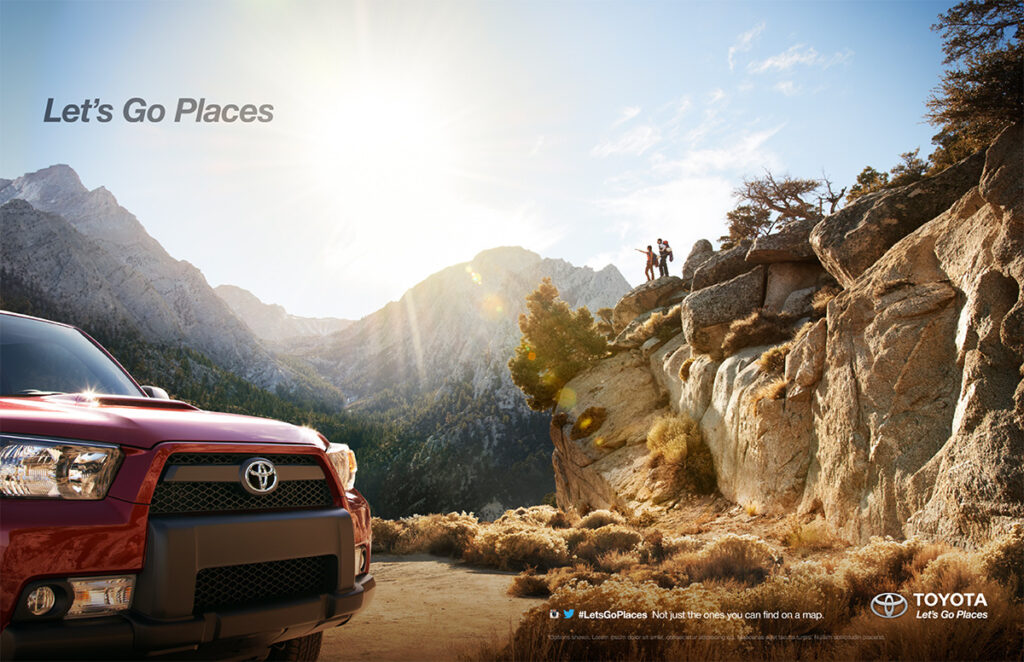
Toyota’s “Let’s Go Places” campaign is a highly successful copywriting campaign that began in 2012. The campaign aimed to reposition Toyota as a more exciting and innovative brand and to create an emotional connection with customers.
The campaign’s messaging emphasized the idea of adventure, innovation, and possibility. The ads featured images of exciting destinations and activities, along with sleek and stylish Toyota vehicles.
One of the key elements of the campaign’s success was its ability to tap into the emotional desires of its target audience. By positioning Toyota as a brand that could help customers live exciting and fulfilling lives, the company was able to create a strong emotional connection with customers and build brand loyalty.
The campaign was also highly effective in showcasing Toyota’s innovative and high-quality products. The ads featured advanced technology and cutting-edge design, emphasizing Toyota’s commitment to excellence and innovation.
Overall, Toyota’s “Let’s Go Places” campaign is an excellent example of how emotional copywriting can help to create a strong brand identity and build a loyal following. By tapping into the emotional desires of its target audience and showcasing its innovative products, Toyota was able to reposition itself as a more exciting and desirable brand.
Mercedes-Benz’s “The Best or Nothing” Campaign
Mercedes-Benz’s “The Best or Nothing” campaign is a powerful example of how a brand can use copywriting to create a strong emotional connection with its customers. By emphasizing the brand’s reputation for luxury and innovation, the campaign has helped to solidify Mercedes-Benz’s position as a top-tier luxury brand.
The campaign’s messaging emphasizes the idea of excellence and perfection, and the ads showcase the sleek and stylish Mercedes-Benz vehicles in a way that highlights their quality and luxury. The tagline “The Best or Nothing” encapsulates the idea that Mercedes-Benz is a brand that values excellence and refuses to compromise on quality.
Recommended Post:
- Sales Copywriting: How to Tap into Your Customers’ Minds
- Ultimate Guide to SEO Copywriting: Tips and Best Practices
- A Complete Guide for Nigerian Students to Study in the UK
- A Sure way to Success Distributing Products in Nigeria
- Best Ideas to Start with Little Money in Nigeria 2023
- Becoming a Data Analyst in Nigeria Booming Tech World
Kindly comment below, share your thoughts with us and you can also visit our Forum. Also, follow us on Facebook to join our Facebook community.





